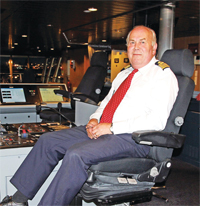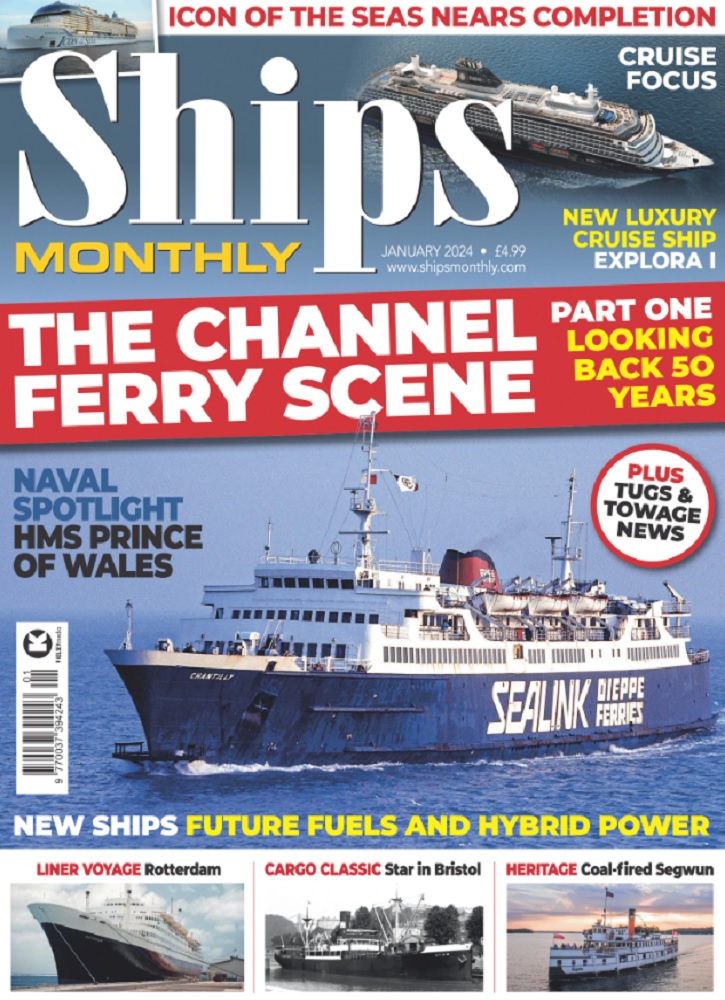As a follow-up to the special feature marking Stena Line’s 50th anniversary in the last issue, Nicholas Leach talked to Roger Corfield, Captain of the Harwich-Hook of Holland superferry Stena Britannica.
When did you first go to sea? On 19 June 1969 on board the product tanker Athelduchess with Athel Line Ltd, a subsidiary of Tate and Lyle. I boarded her at North Shields and we went to Antwerp, and then on to the United States via Japan. I worked with Athel Line until 1975, travelling round the world, picking up cargoes as and when we could at any port.
After Athel Line what was your next move?I continued working on cargo ships with Blue Star Line; Southland Star was my first Blue Star ship, and we went to Australia with general cargo. I left Blue Star in 1982 having served on the refrigerated cargo ships and the box boats, including ACT 4 and ACT 5, as well as the heavy lift ship Starman America going up the Great Lakes as well as northern France, picking up very specialised cargo. I also worked on Lamport and Holt ships, as well as Booth Line, going up the Amazon with general cargo.

What was your next move?I wanted a change and promotion so I moved to offshore supply boats, but didn’t like the working conditions and the rough seas, so I only spent two months on them before leaving Star Offshore and going to Townsend Thoresen Ferries. I worked out of Felixstowe going to Zeebrugge on Viking Voyager as Second Mate for 18 months. I then worked on Stena Line ships, starting with Stena Carrier, before a move to Jamaica Merchant Marine, travelling from Jamaica to the USA on bulkers and ro-ros sailing as mate and master for two years. I then worked for Forest Line, an American company, as mate on LASH ships, one of which was the submersible ship Spruce.
Did you want to work on ferries?The reason I went to sea was to see the world, and in fact I came into the ferry industry by chance. But once I had worked in the ferry industry, I decided it was an expertise I should concentrate on.
How does Stena Britannica compare to the previous ships of the same name?She is bigger and has more lane meterage, with double-deck loading, which is an advantage, but she is very similar to the previous ship in many ways, particularly in terms of the equipment on board. All the passenger facilities are on one deck, which is an advantage. The ship has ecospeed anti-fouling paint, but this is due to be repainted with ordinary anti-fouling. We do the crossings at about 18 knots, rather than her full speed of more than 22 knots, which is a fuel-saving measure. And on board the cabins are very nice, and the decor generally looks good. She and her sistership, Stena Hollandica, are excellent vessels
How long have you been with Stena Line?I returned to Stena Line on the ro-ro ship Stena Gothica across the North Sea on Felixstowe-Gothenburg-Ghent and back to Felixstowe on a one-week round trip. Since December 1991 I have been on the Harwich-Hook route, as second mate, then mate, and in 2002 I became master. Ihave served on all four Stena Britannicas, as well as Stena Europe and Stena Searider.
How have ships changed?GPS is a great innovation, and ships have got bigger and maybe a little bit faster, while the accommodation for crew has got considerably better. When I first came to sea, we had a compass, radar and a wheel, but no alarms or electronic maps. Radar has improved enormously.
What shifts do you work and how many crew do you have?It is basically one week on, one week off, which is the same for nearly all the crew. We have an average crew totalling 85, of which five are deck officers, with nine ABs, an assistant bosun and a bosun, five engineers, up to three electricians, three motormen and a hotel repair man. All the others work in the hotel department, including the four chefs.

Read A View From The Bridge every month in Ships Monthly – subscribe here


